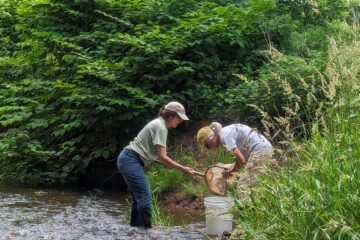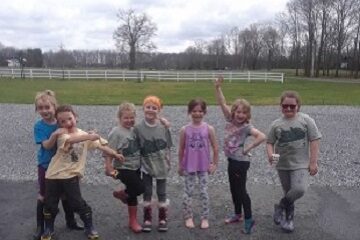Its feeding time! In this game, kids use different “beaks” to collect food. Learn how birds’ beaks are adapted for the type of food they eat! Created be Miranda Jakubek, RHA Educator
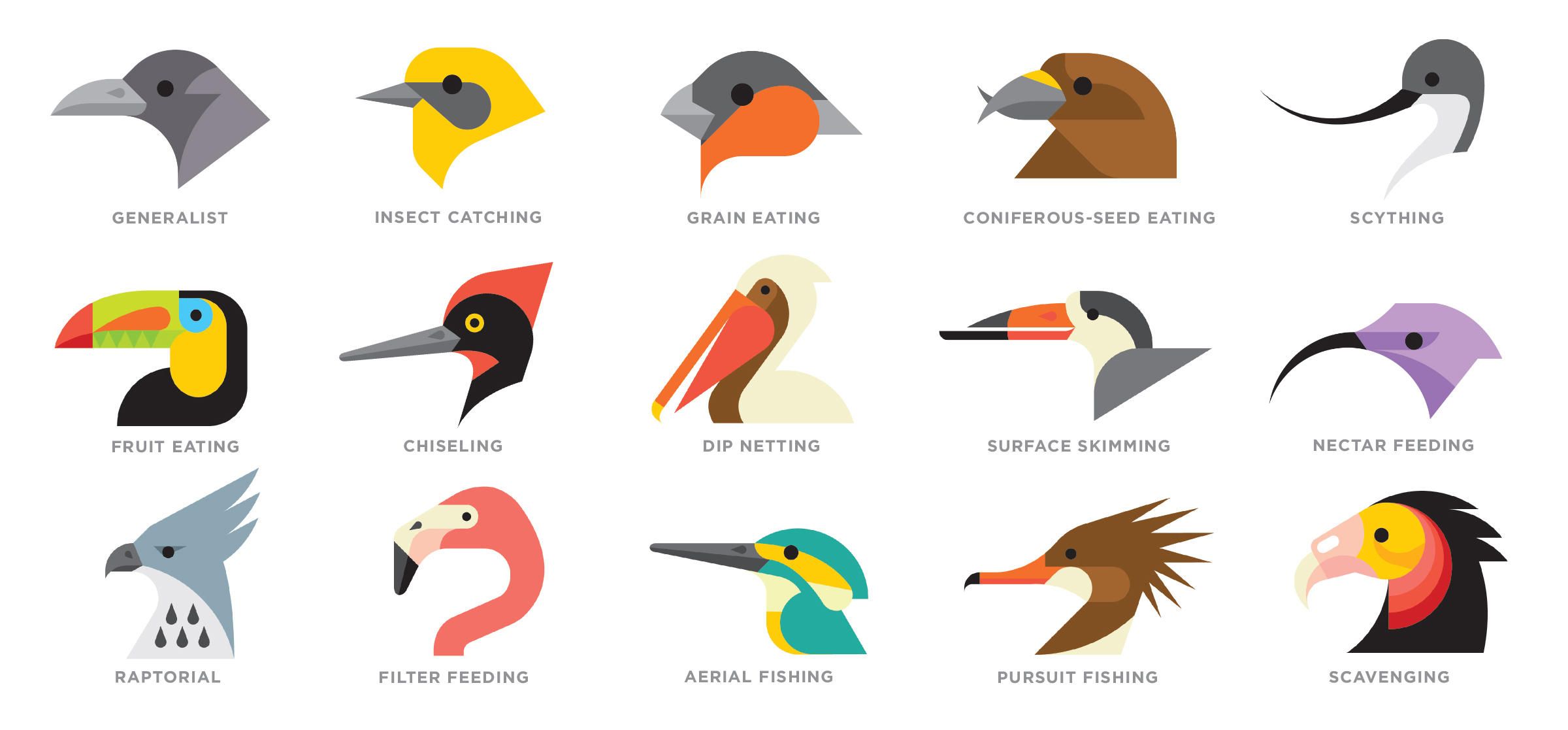
Level: Pre-K, Elementary
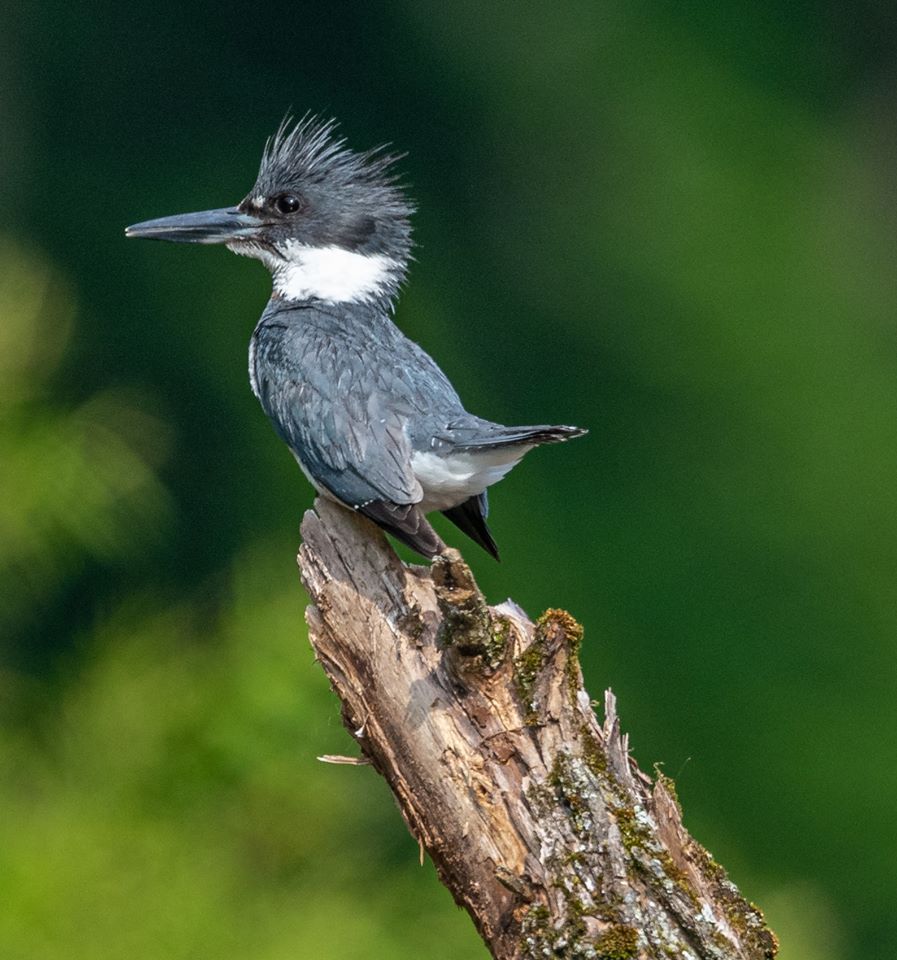
Belted Kingfisher by Dallas Hetherington
Duration: 30 – 45 minutes
Setting: On a table, on the floor or in your backyard
Materials:
- Paper and markers or pencils or scorecard
- Small cups (one for each “bird”)
- Food – any assortment of the following:
- Cut up pipe cleaners or yarn,
- Dry beans
- Cheerios
- Seeds
- Rice
- Pennies
- Paper Clips
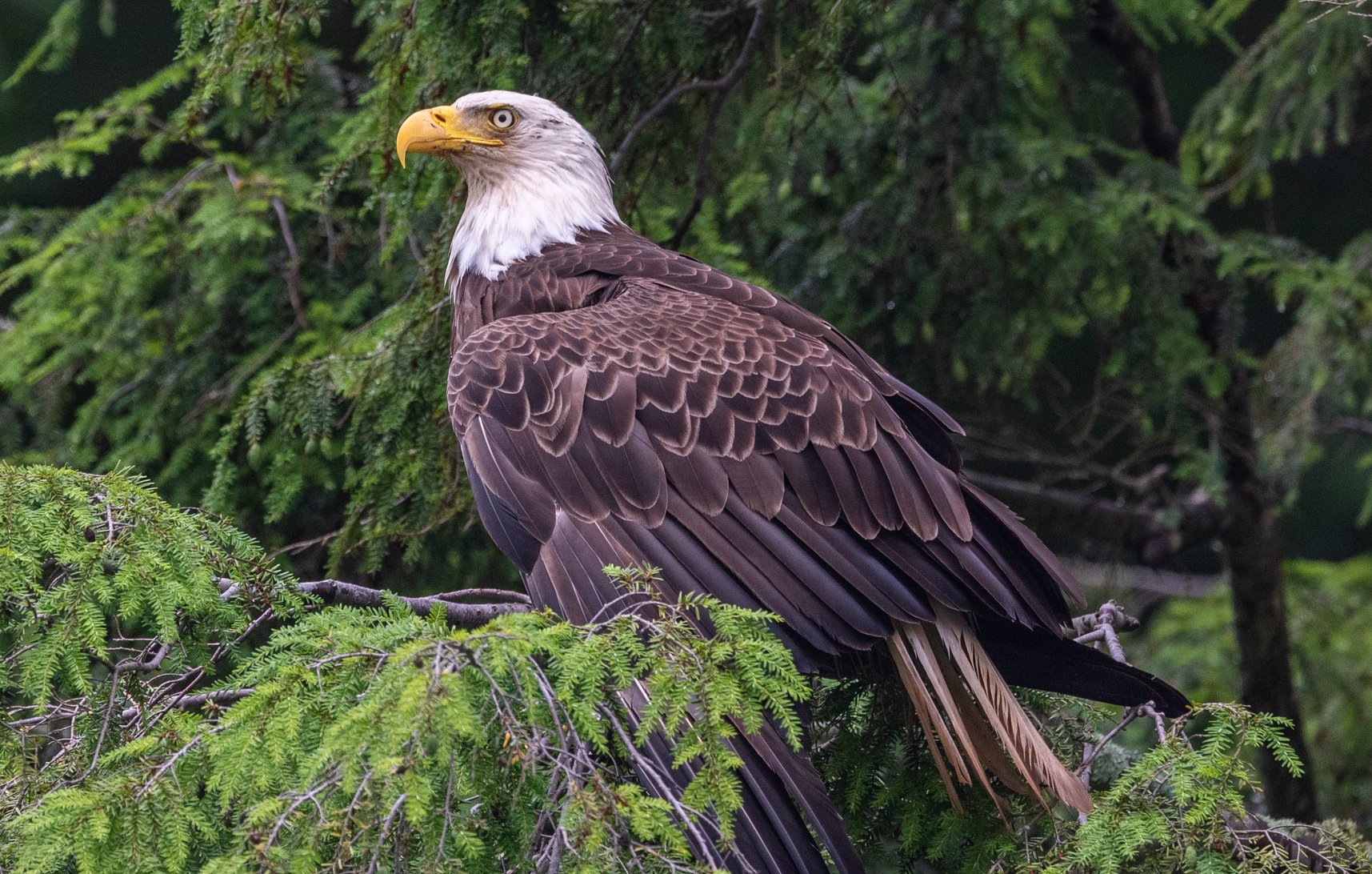
Bald Eagle by Dallas Hetherington
- Rolled up paper balls
- Rubber Bands
- Other similar things that you can find in your home!
- Beaks:
- Spoons
- Scissors
- Tweezers
- Clothes pins
- Tongs
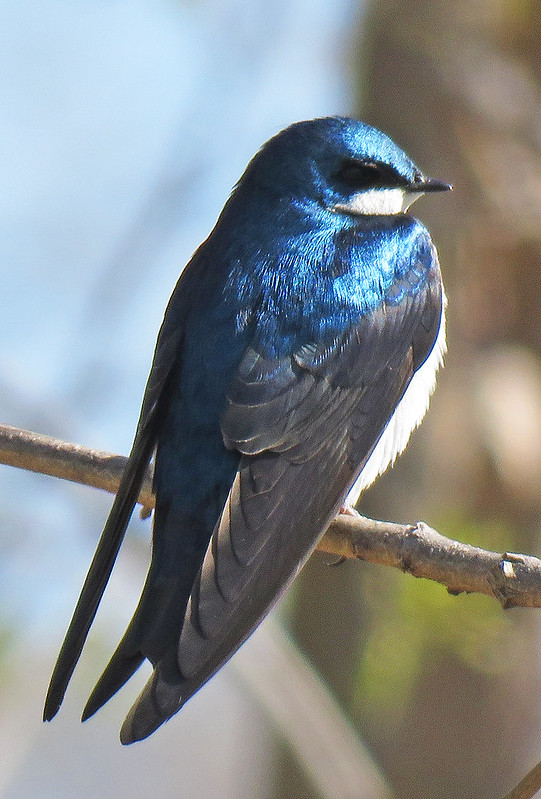
Tree Swallow by Judy Gallagher
- Chopsticks
The Activity:
- Intro: What do you know about birds? What kinds of things do they eat?
- Look at the birds outside your window or in your backyard (if possible). Are the beaks different? How so? What were the birds doing? How might their behavior differ because of the beaks they have?
- Discuss what kinds of beaks have you seen (long, pointy, short, wide). Explain that bird beaks are adapted to match the type of food they eat. Adapted means designed for a certain job or environment. Creatures that are adapted to their environment have a better chance of survival. Many birds have tweezers-like beaks so they can reach and eat animals that burrow deep. Some birds have scissor-like beaks that rip food apart into bite-sized pieces. Other birds have clothespin-shaped beaks that can
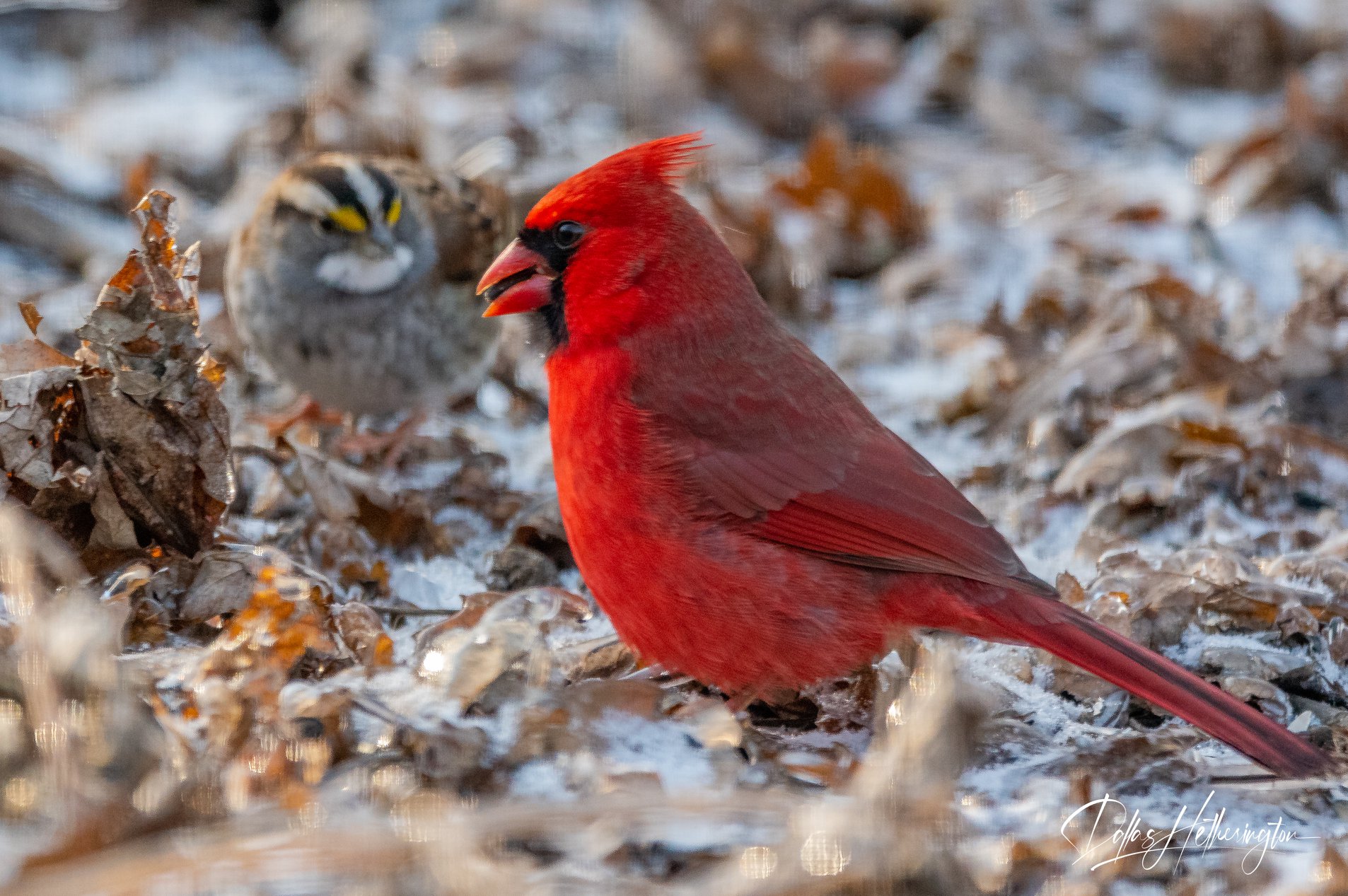
Cardinal by Dallas Hetherington
crush the hard covering of seeds. Birds with
spoon-like beaks can scoop up large numbers of small fish or strain plant material from mud.
Different types of birds can coexist because they eat different things. Coexist means to live in the same area at the same time. This is why many types of birds can feed together in one area!
Some examples:
- Hummingbirds: birds that have long, hollow beaks that protect the bird’s tongue; they use their tongue to slurp up nectar – Ruby-throated and Anna’s Hummingbirds
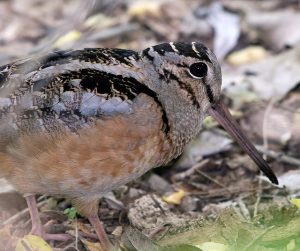
American Woodcock
- Herons and egrets: birds that hunt for fish in shallow water have long, sharp beaks that they use to catch or spear fish – Great Blue Heron and Snowy Egret
- Birds of prey (raptors): birds that eat other animals have strong, sharp beaks to tear the meat into pieces small enough to swallow – Great Horned Owl, Bald Eagle, and Cooper’s Hawk
- Shorebirds: birds with very long, thin beaks that they use to probe for food in thesand or mud – Spotted Sandpiper, American Woodcock, and Wilson’s Snipe
- Woodpeckers: birds that drill for food under bark have strong beaks which are sturdy and taper at the tip, forming a chisel for pecking holes in trees – Downy, Hairy, and Pileated
- Seed eaters: birds that have short, strong, triangular-shaped bills that can crack open seeds – Northern Cardinal, American Goldfinch, Song Sparrow, White-throated Sparrow,
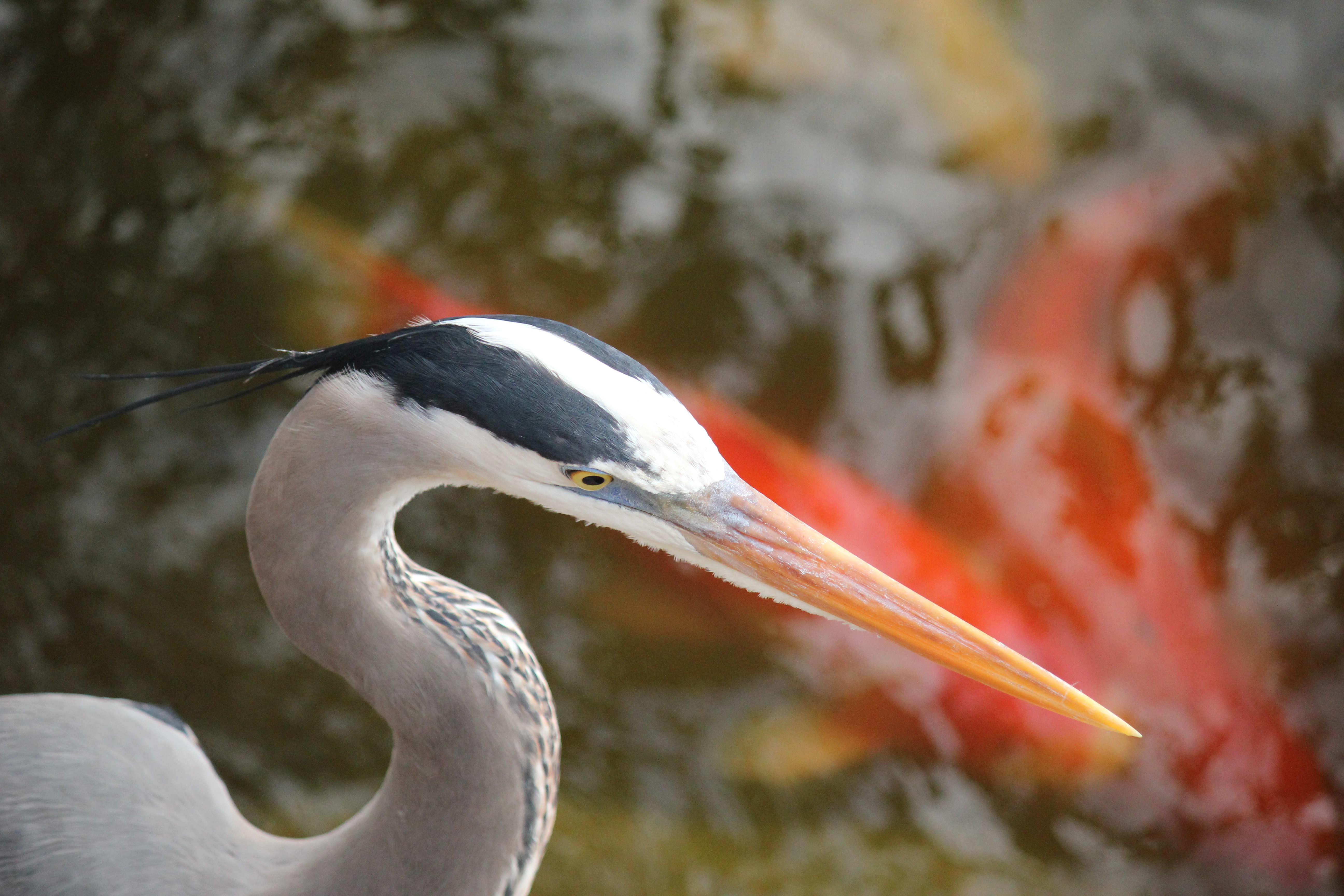
Great Blue Heron by Lauren Theis
and Rose-breasted Grosbeak
- Aerial insectivores: birds that feed while in flight, catching and eating airborne insects havebeaks that are very short and flat; their mouths open very wide and act like nets to trap flying bugs – Tree and Barn Swallow, Common Nighthawk, Purple Martin, and Chimney Swift
- Flamingos and some ducks (only certain ducks are filter feeders.): birds that have beaks that act like strainers; they filter their food, plants, seeds, and small animals, from the water using the comb-like edge of their beak; water enters at the tip of the beak and exits out the sides – Flamingo, Mallard, and Blue-winged Teal
- Warblers and thrushes: birds with sharp, pointed beaks; used to
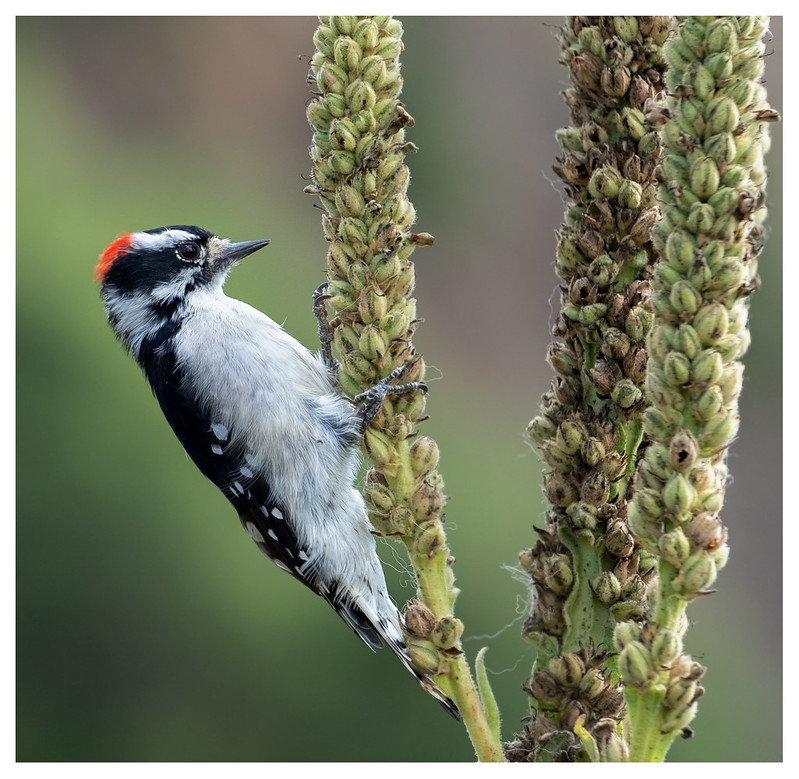
Downy Woodpecker
pick insects from leaves, logs, and twigs – Yellow Warbler, Common Yellow throat, American Robin, Wood Thrush, and Ovenbird.
3. Game (5 minutes) Give each child a cup and one bird beak.
4. Explain the rules:
- Children must stay put in their “nest” until allowed to feed. Birds must pick up their food using only their beaks.
- Cups must be held upright.
- Distribute the food on the table top or on the ground.
- Let the children pick up as much food as they can in 3 minutes – using only their beak (no hands)!
- Play a few rounds, so everyone can try a few different beaks. Scatter all collected food on the ground in between each round.
- Record the results of the game by beak and food type using the scorecard below, or a piece of paper.
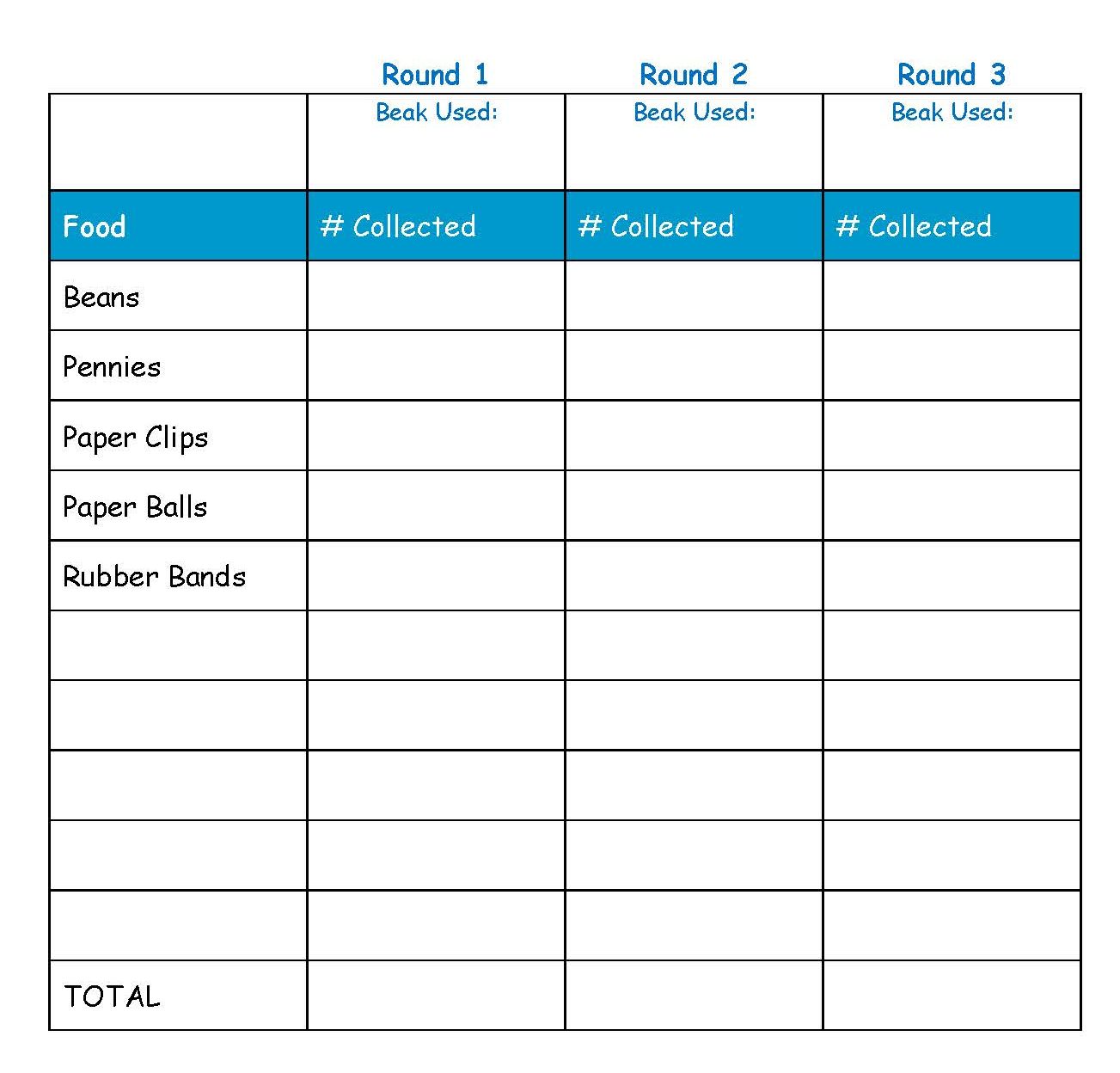
Download a printable scorecard here
Wrap Up (reflections, follow-up questions):

Female Ruby Throated Hummingbird
- Are some beaks better at eating a particular food?
- What other parts of a bird are important to its feeding success?
- In which habitats does each beak type forage for its food?
- How could pesticides affect birds and their food?
- How could you make sure that many different birds can live in an area?
How did you like this activity? Please share any questions, comments, or photos that you and your child have on the Raritan Headwaters Learning Community Facebook Page!
More Raritan Headwaters Learning Resources

